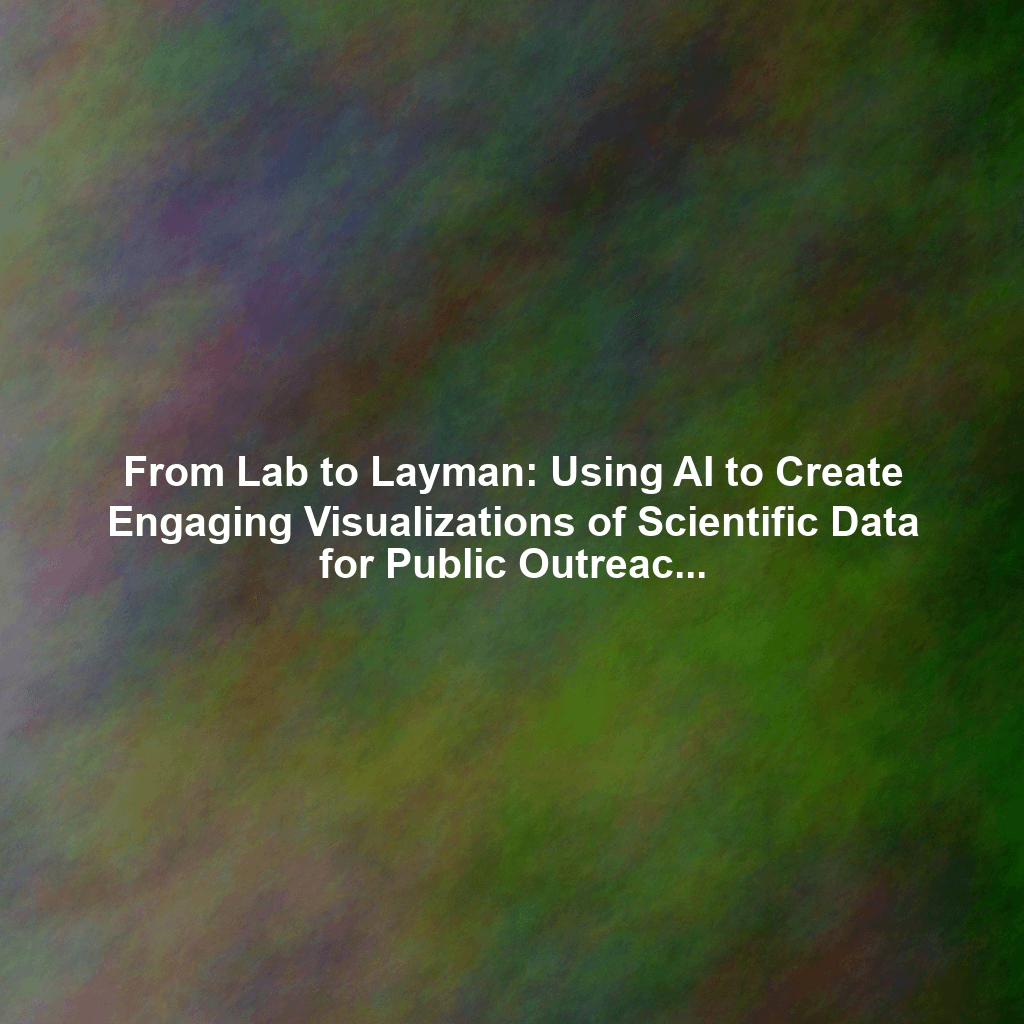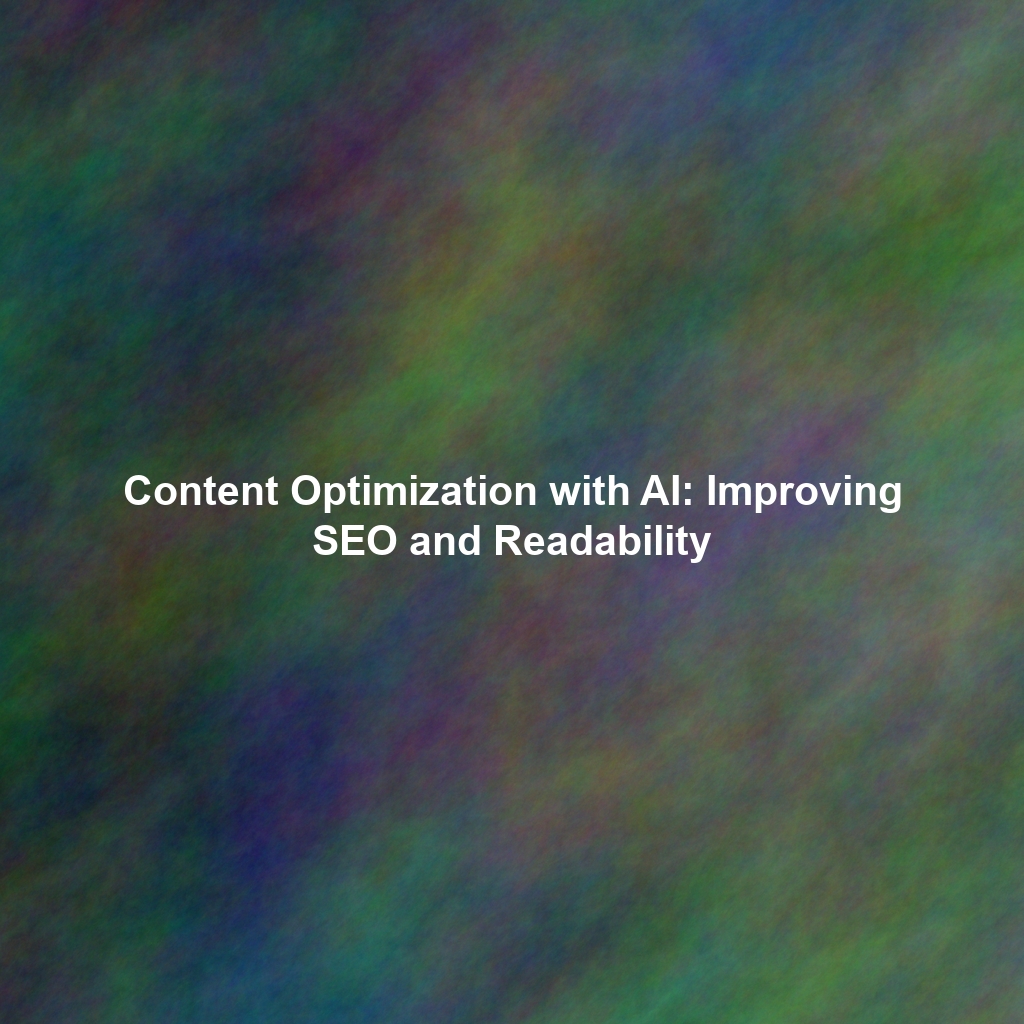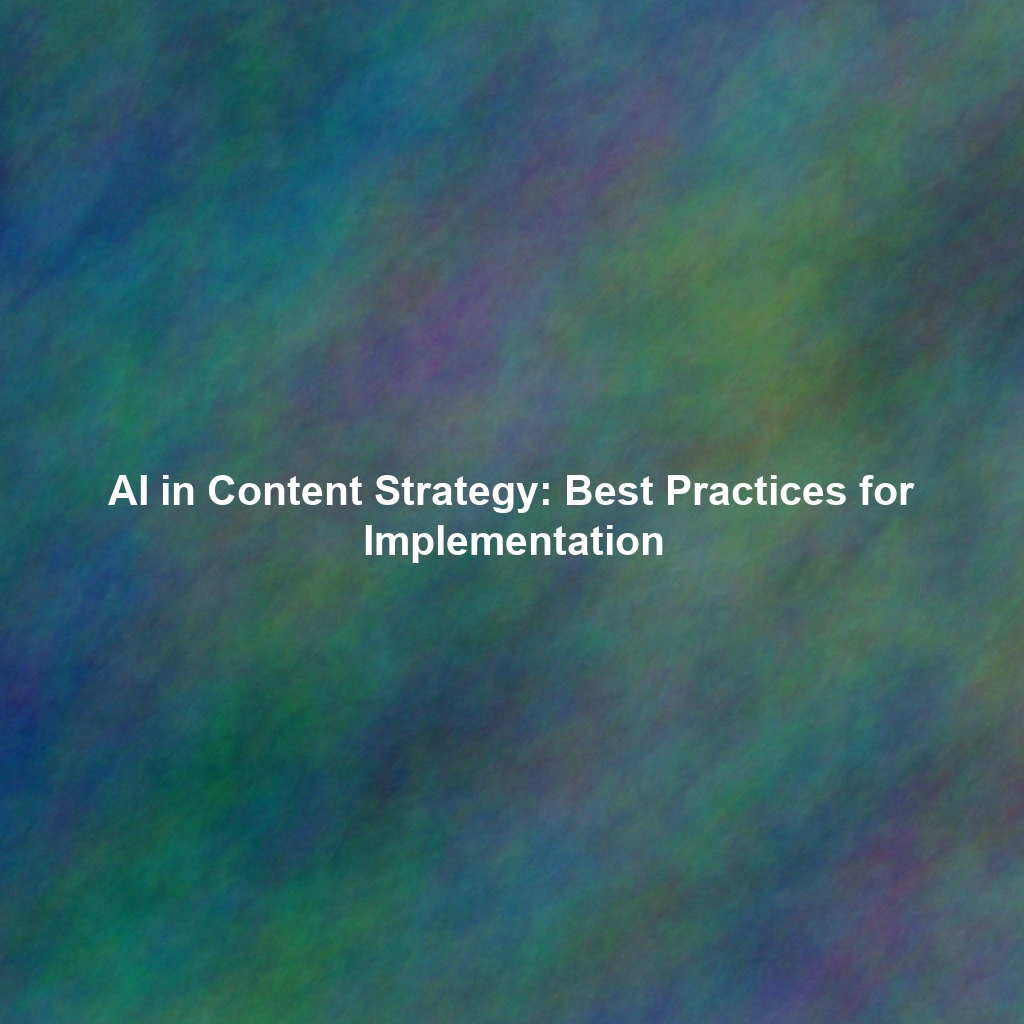Scientific research plays a crucial role in shaping our understanding of the world, driving innovation, and informing policy decisions. However, the complexity of scientific data often presents a significant barrier to public understanding. Bridging this gap between researchers and the general public is essential for fostering scientific literacy and ensuring that research findings can benefit society as a whole. Fortunately, Artificial Intelligence (AI) is emerging as a powerful tool for transforming raw scientific data into engaging and accessible visuals, effectively translating complex information for a broader audience.
The Power of Visual Communication in Science
Human beings are inherently visual creatures. Our brains process visual information far more efficiently than text, making visual communication an incredibly effective means of conveying complex ideas. In the context of science, visualizations such as infographics, charts, graphs, and animations can significantly enhance understanding and recall. Instead of being overwhelmed by dense tables of numbers or jargon-laden reports, the public can grasp key findings and trends at a glance. Research consistently demonstrates that information presented visually is more memorable and engaging than text alone, leading to improved knowledge retention and a greater appreciation for scientific endeavors.
Benefits of Visual Communication:
- Enhanced Understanding: Visuals simplify complex concepts, making them easier to understand.
- Improved Recall: Visual information is more memorable, leading to better knowledge retention.
- Increased Engagement: Engaging visuals capture attention and spark curiosity.
- Wider Accessibility: Visuals can transcend language barriers and reach a broader audience.
AI: The Translator of Scientific Data
AI offers a transformative solution for creating compelling scientific visualizations. AI-powered tools can analyze vast datasets, identify key patterns and trends, and automatically generate insightful visuals tailored for specific audiences. This automation significantly reduces the time and resources required to produce high-quality visualizations, freeing up scientists to focus on their core research. Moreover, AI can help ensure accuracy and consistency in data representation, minimizing the risk of misinterpretation.
How AI Generates Visualizations:
- Data Analysis: AI algorithms analyze raw data to identify significant patterns and relationships.
- Visualization Design: AI selects the most appropriate visualization type (e.g., bar chart, scatter plot, map) based on the data and target audience.
- Automated Generation: AI automatically generates the visualization, including labels, legends, and annotations.
- Customization: Users can further customize the visualization to meet specific communication goals.
Examples of AI-Powered Data Visualization Tools
Several AI-powered tools are revolutionizing science communication by enabling the creation of stunning visualizations with ease:
Tableau with AI Integration:
Tableau is a popular data visualization platform that integrates AI functionalities. It can suggest relevant visualizations based on the data and automate data cleaning and preparation. The “Ask Data” feature allows users to query data using natural language, making it easier to explore and uncover insights.
Flourish:
Flourish is a user-friendly platform that offers a wide range of interactive visualization templates. Users can upload their data and quickly create engaging charts, maps, and stories. While not purely AI, it simplifies the visualization process significantly and is widely used by journalists and science communicators.
RawGraphs:
RawGraphs is an open-source tool that focuses on creating custom visualizations from complex datasets. It’s particularly useful for visualizing network data and other intricate relationships. While it requires more manual input than some other tools, it offers greater flexibility and control over the visual output.
GANs (Generative Adversarial Networks) for Scientific Image Enhancement and Generation:
In fields like microscopy and astronomy, GANs are used to enhance image resolution and even generate realistic simulations of scientific phenomena. This allows for creating compelling visuals that were previously impossible to obtain.
Applications in Science Communication
AI-powered visualizations are being used across a wide range of scientific disciplines to communicate research findings to the public:
- Climate Change: Visualizing temperature trends, sea-level rise, and the impact of deforestation using interactive maps and animated charts.
- Public Health: Tracking the spread of infectious diseases with dynamic dashboards and infographics.
- Astronomy: Creating stunning visualizations of galaxies, nebulae, and other celestial objects from telescope data.
- Genomics: Illustrating complex genetic relationships and the impact of gene mutations with interactive diagrams.
Addressing Potential Challenges
While AI offers immense potential, it’s essential to acknowledge potential challenges. Data bias, algorithm transparency, and ethical considerations surrounding the use of AI-generated content must be carefully addressed. It’s crucial to ensure that AI-powered visualizations accurately represent the underlying data and avoid perpetuating misinformation or harmful stereotypes. Additionally, human oversight is vital to ensure that the visualizations are clear, understandable, and appropriate for the intended audience.
Conclusion: Democratizing Science Through Visuals
AI is revolutionizing the way scientific research is communicated to the public. By transforming raw data into engaging and accessible visualizations, AI empowers scientists to share their findings more effectively, fostering scientific literacy and promoting informed decision-making. As AI technology continues to evolve, we can expect even more innovative and powerful visualization tools to emerge, further democratizing science and making it accessible to everyone. This ultimately leads to a more scientifically informed and engaged public, capable of contributing to solutions for the complex challenges facing our world.
 Skip to content
Skip to content

